The Great Wall of China
Walking the Great Wall at Jinshanling

Up too early for the hotel’s breakfast (they packed us something), we waited for our driver with a Dutch couple, Jan and Emmie, who’d be joining us on our trip to China’s Great Wall. They too had booked through Rickshaw Travel and we shared much of the same itinerary — later we’d travel to Xi’an together on the sleeper train and then see the Terracotta warriors together, we’d even bump into each other again at Guilin airport on route to Hong Kong.
Sam and I hadn’t realised just how far out of town the wall was, add to that Beijing’s traffic and it took 2h30 to travel the 130km necessary to get there. We were going to a remote and lesser known portion of the wall at Jīnshānlǐng, originally built in 1368 and restored in 1567. 10km of the wall is open to the public, starting in Longyukou in the west through to Wanglinglou in the east, via 5 passes (where soldiers would enter and exit), 67 towers and 3 beacon towers. It seems many parts of the Great Wall that you can hike have been rebuilt entirely, to withstand the hordes of tourists that trample it day after day, not something it was ever originally intended for. But at Jinshanling this isn’t the case, many parts seem to have been left untouched — shattered bricks still lie on ancient foundations, though some crumbling and dangerous parts were firmed-up in 2012, and some minor work is still going on. Generally as you head East the wall’s condition deteriorates, with a small section too damaged to walk on and its circumnavigated by a muddy trail.
Through a game of charades with our driver, who spoke no English, we arranged a pick up location and time; we bought our tickets (65RMB each) from the newly built ticket office and set off. Quickly and firmly we told the friendly and helpful locals, who briefly hiked with us, that we wouldn’t be buying anything and they left us alone.
The maps of the wall are confusing, we had one, Jan and Emmie had one, and they both looked different, the park had one but it too was different. Once you get to the wall you only need to know left or right and then when to stop, a map ought not to be too difficult. After some confusion we took the Shalinggou path to the wall. The paved trail climbs swiftly and ends abruptly, leaving you staring up at the base of a restored 16ft wall, steep steps take you up onto the wall’s surface.
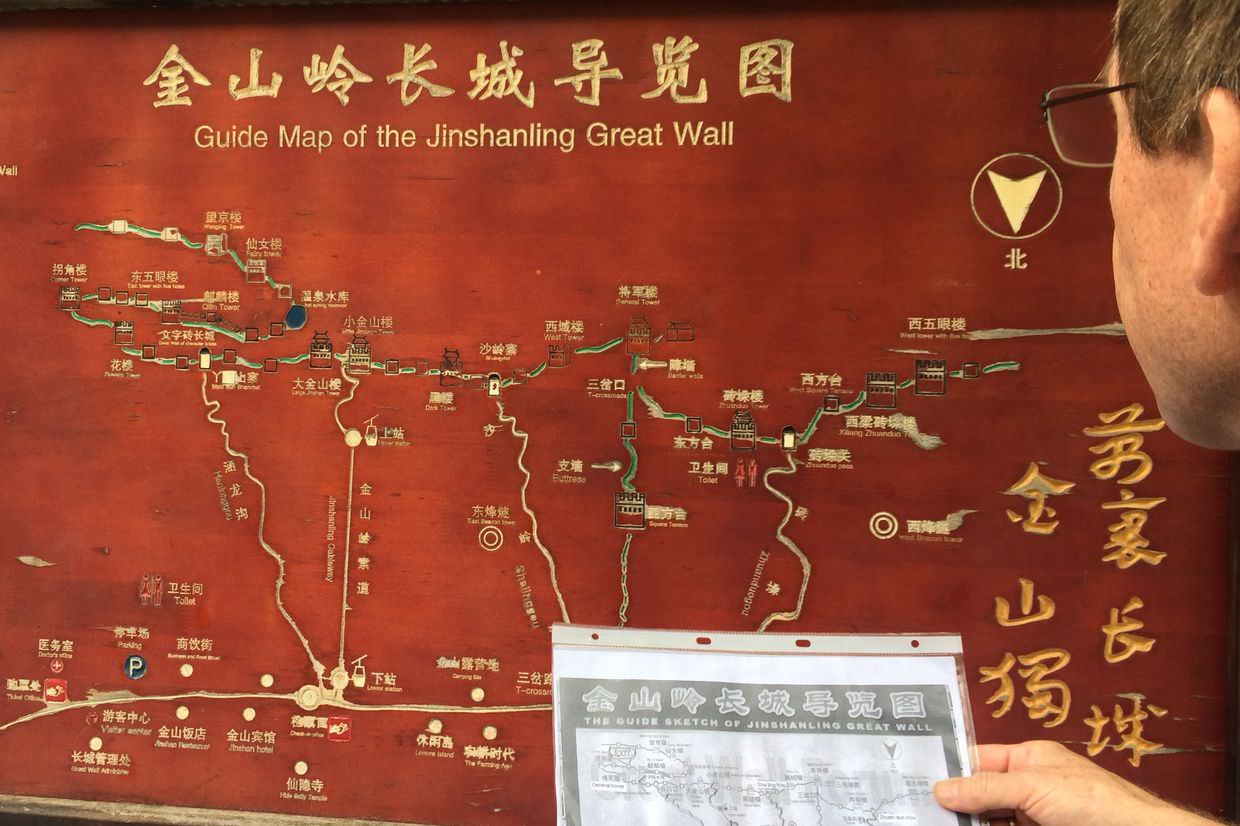
From the top of the wall you can’t help but smile, this place is a little bit special and it looks exactly like all the pictures. Stretching out into the distant East and West the wall hugs the hilltops, snaking along the highest point — beacons and towers visible from miles away; to the North and South are fabulous mountain ranges. It’s tremendously exciting just to be here, but we also had the place to ourselves; no tour groups, no other hikers, just the four of us in the morning fog, the temperature perfect for a ramble, the air quiet but for chirping birds. It was overcast and the visibility wasn’t great but as the day passed the clouds lifted a little. Still, this was one of our highlights in all of China.
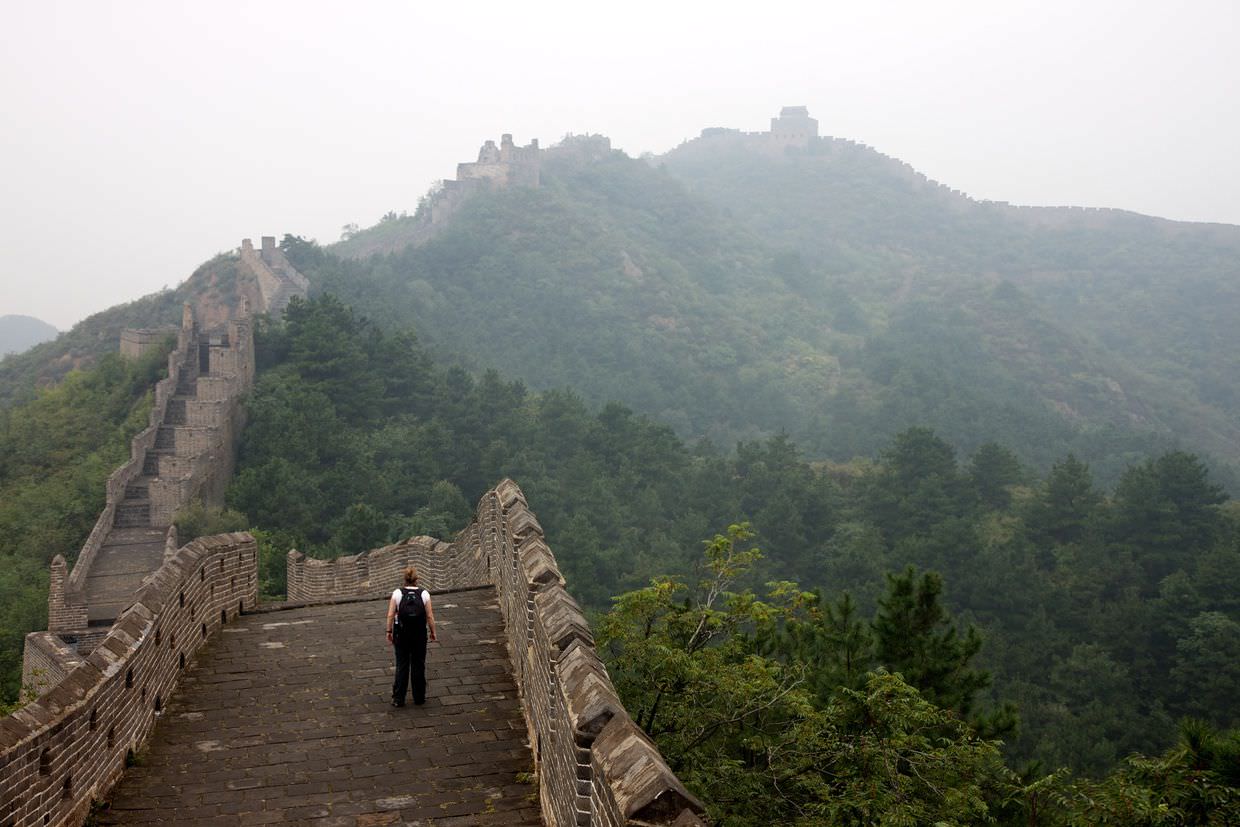
West to East
We hiked from Shalinggou path to the East gate, which would take us 4 hours, walking fairly slowly and stopping to take a lot of pictures. The first tower we came to was “Dark Tower”, legend says it was struck by lightning and caught fire — and a girl named Hei Gu (meaning ‘black’) died trying to put out the fire, when it was rebuilt it took its name from her and became the dark tower. We continued East, up and over some hills, up and down steps, through some more towers along to Large Jinshan Tower — named by the soldiers who built it in 1569, after their hometown. This tower is two storeys high, and you can climb its hidden stairs to see out from the top where the views are all the more spectacular (you may also inadvertently and hilariously scare your wife who can hear your voice but can’t see you). The wall continues but begins to deteriorate, the level easy-going floor crumbles, some of the wind-sheltering “wall-top walls” have fallen away and the slopes decline and climb at a steeper gradient, still, it’s not too arduous (although I imagine in the heat of the midday sun it could be tough).
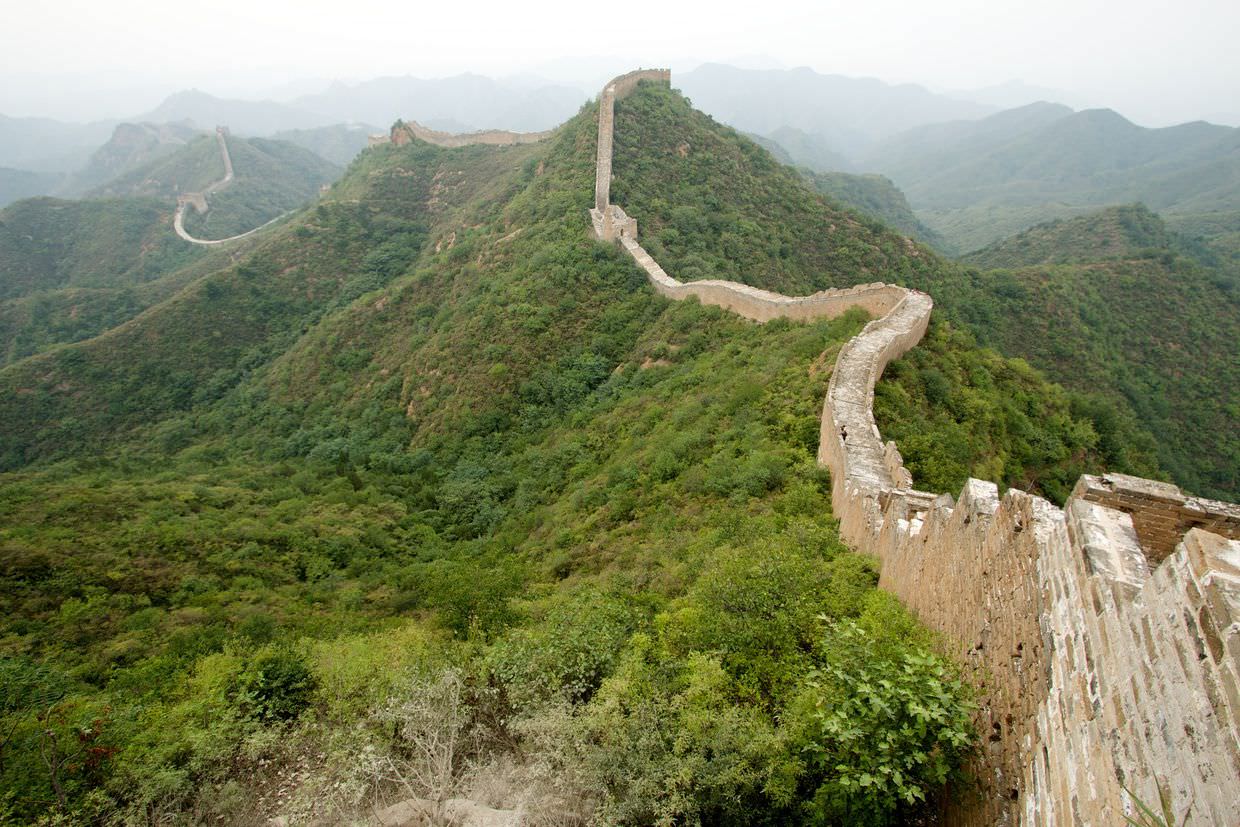
Half-way along we stopped at a tower for tea and coffee. Many locals sit in the towers along the wall, ready to serve you light refreshments, tea, coffee, snacks, for a small but reasonable fee. At tiny plastic chairs Sam, Jan and Emmie sat inside to enjoy some coffee, while I found a perch outside with a good view to eat my packed breakfast (a sandwich with every possible filling crammed in — ham, mayo, gherkin, cheese, tomato, onion, and more), urging on the occasional sweaty tourist, three suited and exhausted Chinese businessmen in particular.
Pushing onwards we reached the Houchuan pass, via a crumbling and trodden trail, it was one of the main passages to go in and out of the wall and would have been heavily guarded. A section of the wall shortly after this is too damaged to walk on and was undergoing repair, we followed the mud trail around the bottom of the tower, slippery and tricky at times, but we soon found our way back onto the ancient wonder. Our final stop along the wall was at the “East tower with five holes”, built in 1569 and named after the five arrow holes in the North and South walls. Labourers working to repair the wall were on their lunch break. The wall continues East, towards Sīmǎtái and a scenic view of the reservoir, but you have to return by the route you came — back to this tower. Its 5km long and was only reopened to the public in 2014. Regrettably we chose not to continue, the time we were meeting the driver was approaching, we didn’t have much food and it’s a long way back down to the car park (though also, it’s a long way back to China!).
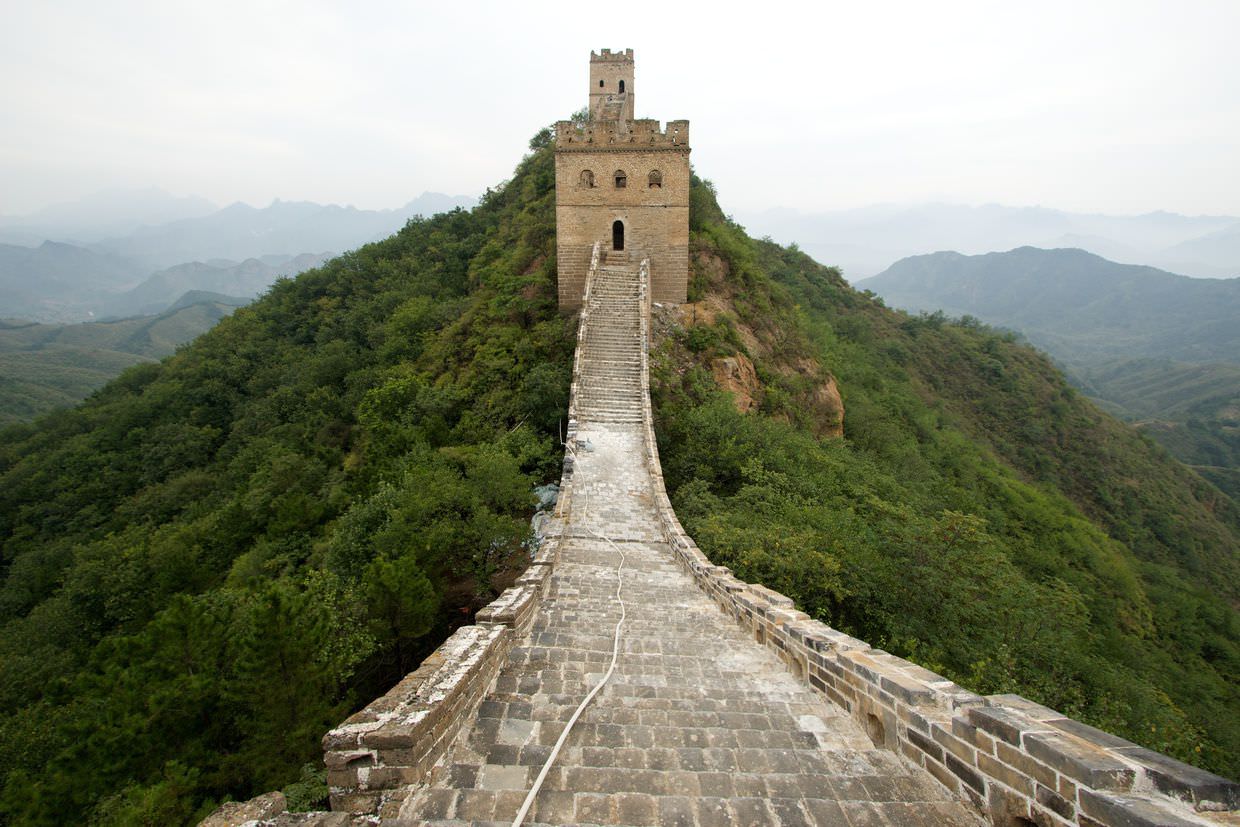
The hike down the hill to our driver was hard on the knees, and we all got a bit of the wobbly-thigh by the end. Our driver was there (we were afraid he wouldn’t be), and soon enough we were headed back to Beijing. The main road, big and capable of handling a lot of traffic, was quiet. Road signs used cartoons to warn against speeding; an elephant in a car warned about overloading, and a giraffe about clearance. Then we fell asleep.
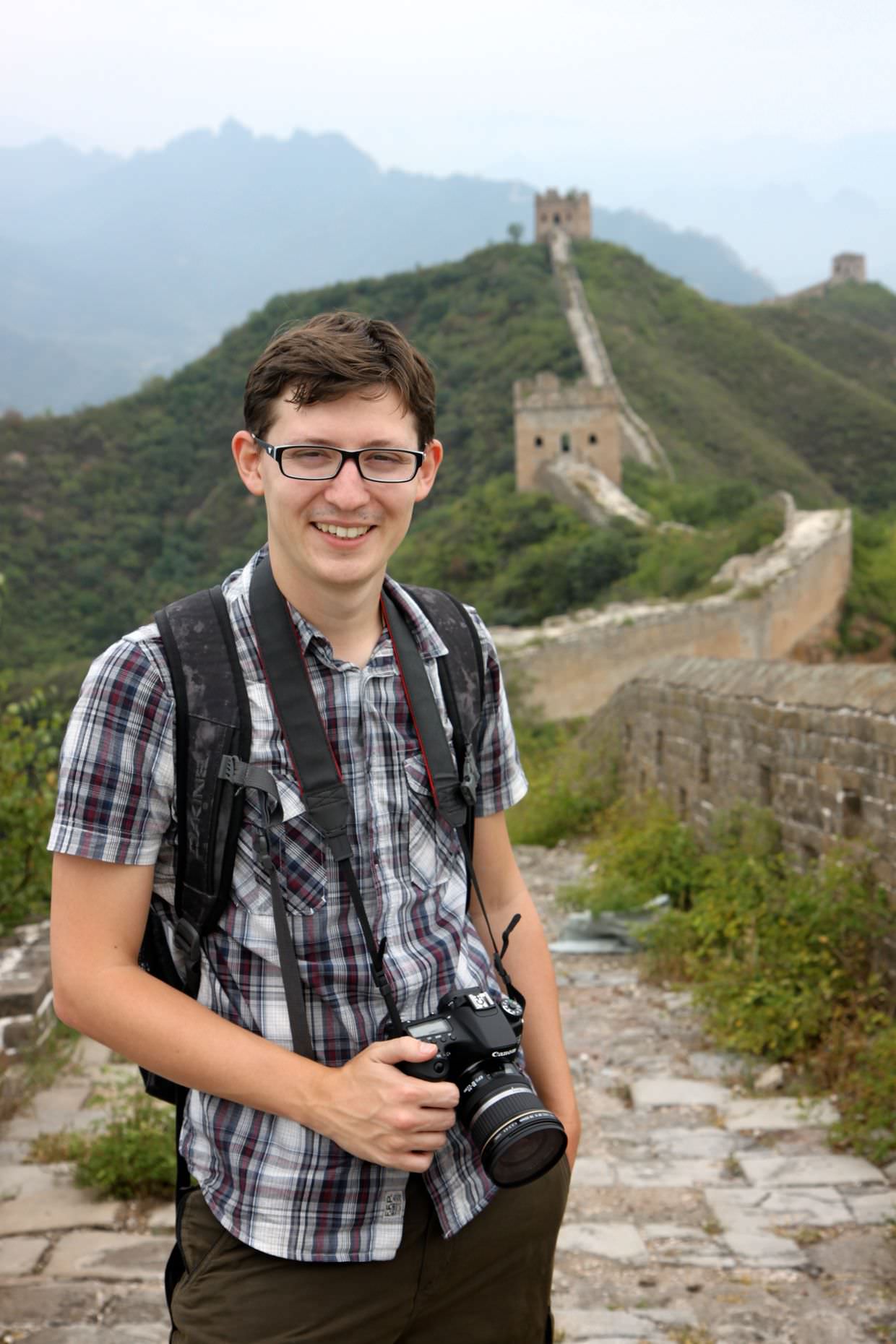
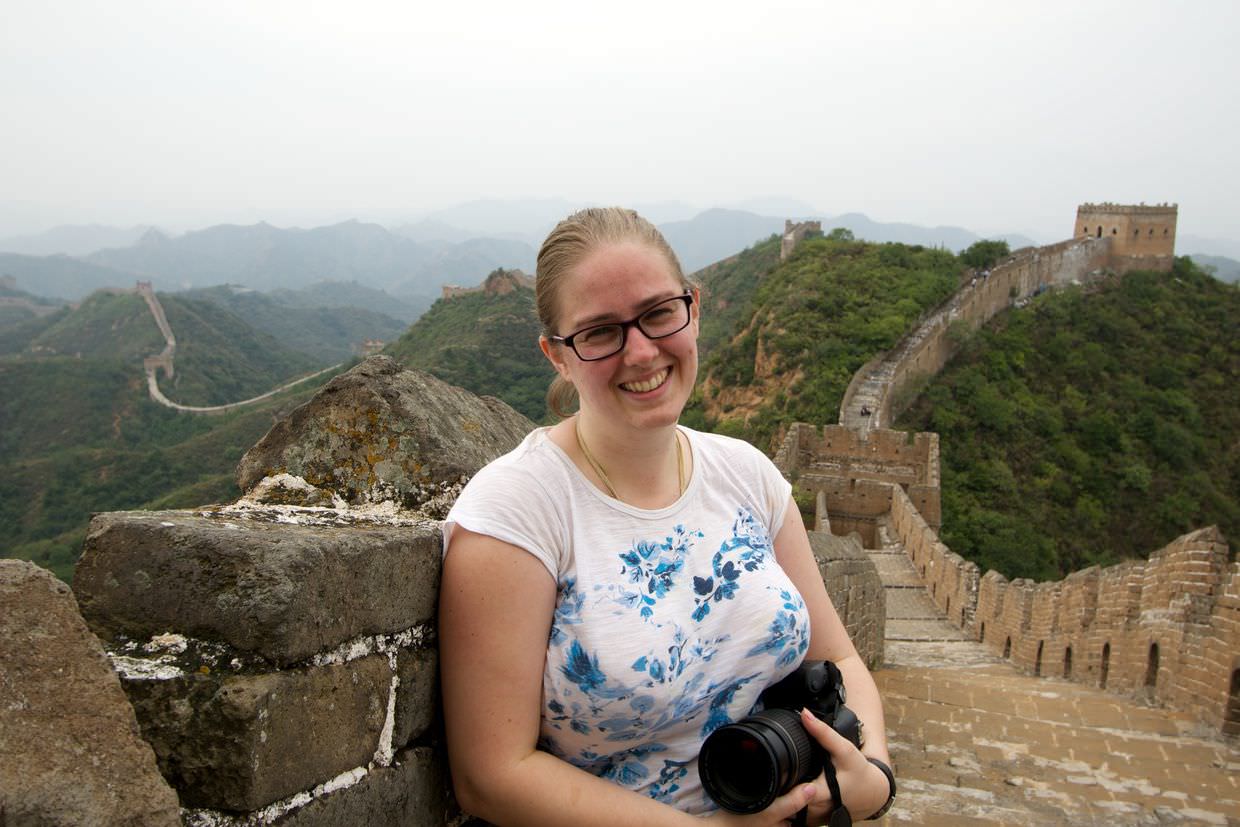
Dinner in the Hutong
Arriving back at Courtyard 7, we cleaned ourselves up and headed out again pretty swiftly — hungry and eager to find an early dinner. We made a bit of a false start, trying to book a recommended peking duck restaurant to find it was fully booked — and then trying to make it to a different duck place by taxi; first no taxi would stop for us, and when one eventually did we got in, drove 200m and then the driver kicked us out. Grumpy, we returned to the Hutong on foot. Instead of following the main alley we began to explore the offshoots, the numerous perpendicular intersections which reveal the true scale of the area.
Away from the more touristy parts of the Hutong the narrow alleys open up onto hidden residential courtyards, local markets selling fresh fruit and veg, and small cafes and restaurants which double as homes. We wandered until a place took our fancy; “Grandma Creative Kitchen”, looked quaint and lovely. Our waiter spoke very little English, and he spoke it nervously — it felt like a good opportunity to try out my nervous mandarin, but it mostly confused more than helped. We ordered tea, soup, duck, chicken and rice; it felt like homemade food and it was all tasty. The Chinese don’t seem to do courses, no starters and desserts and the food comes quickly and all at once.
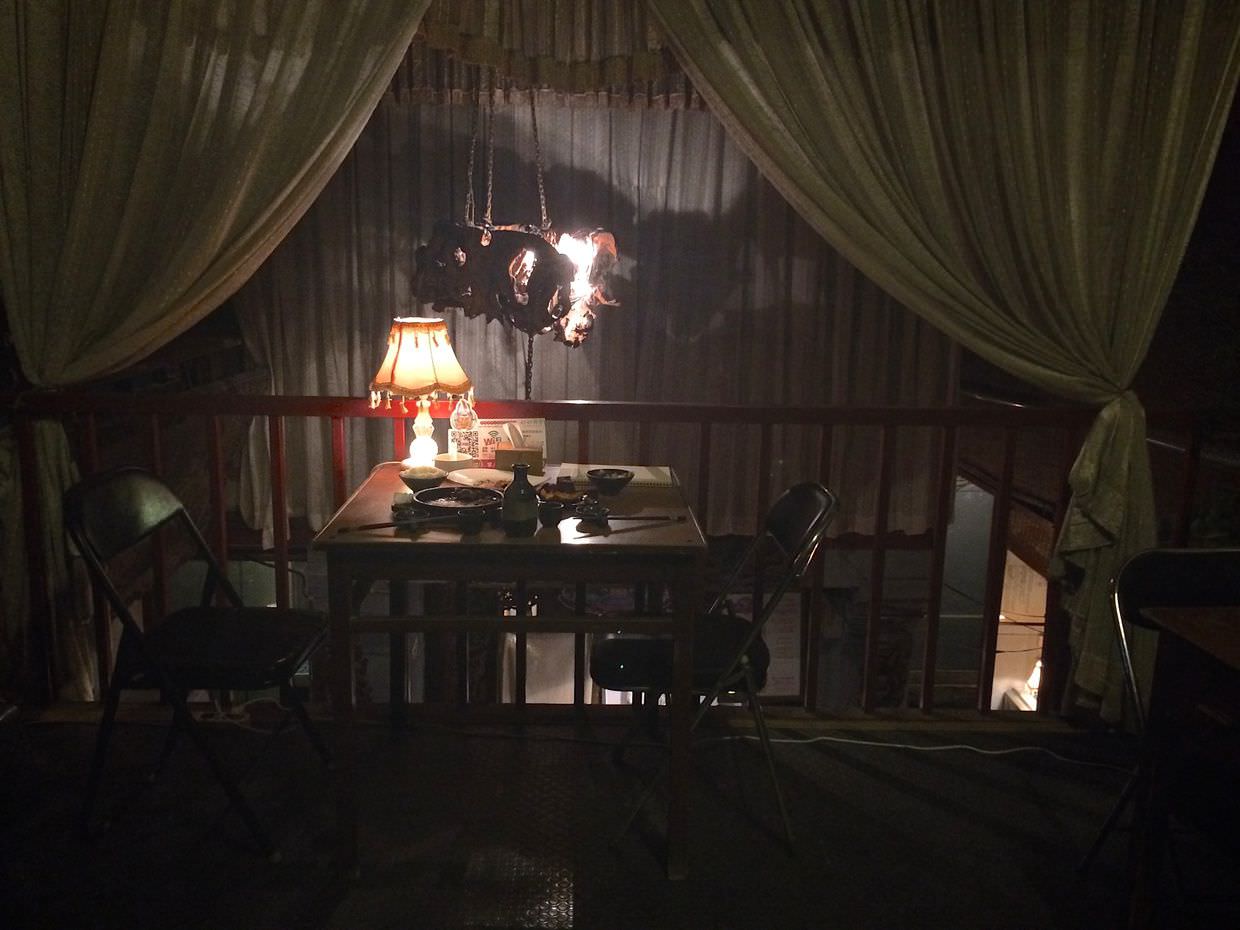
Craving something sweet we stopped at chintzy looking cafe, Lady, that wouldn’t have been out of place in Brighton’s lanes. Inside the sofas and tables were occupied mostly by cats, a boy was toying with a grey kitten — teasing it with a green furry thing; the cats had their own beds and their pictures were on the wall, one of the tables doubled as a fish tank. It felt like most of the family that lived here were using the cafe as a lounge, watching TV, doing some work on a laptop, making the most of the space. We ordered some mojitos and cheesecake, and mostly enjoyed watching the cats and the atrociously bad Chinese soap playing out on the TV (we’d come across that cheesy moustached main character again in our adventures).